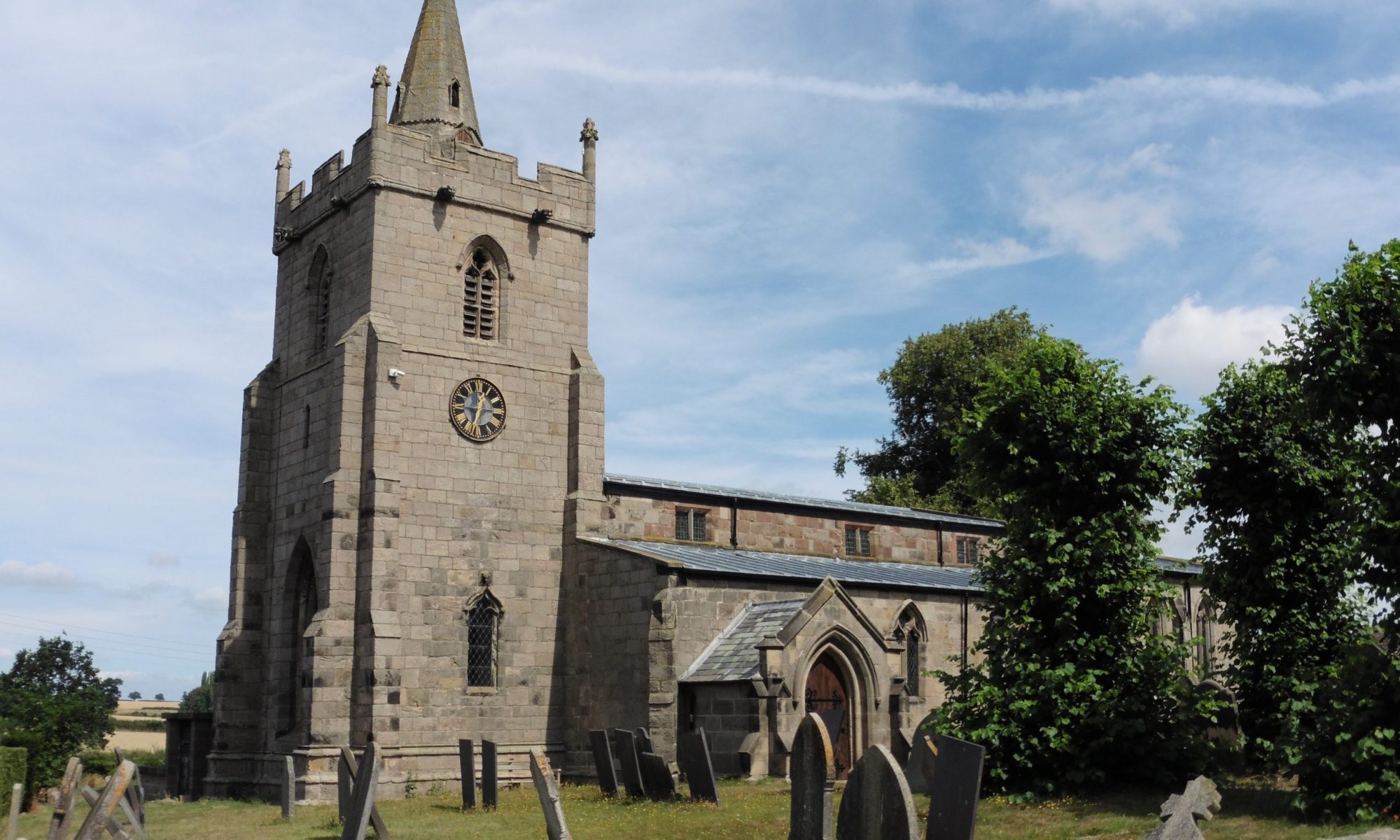There are several latin documents relating to Church Broughton at Chatsworth, which I have not yet translated. I looked at one signed by Edward VI. Certainly later Dukes sold and exchanged land here, but 5 there were freeholders as well. I am interested in how they became wealthy. People seem to have had estates in several counties. Old Hall Farm may have started as a single storey house before 1300 and have been added to, but the builder must have had fairly substantial funds.
In 1626, the then Duke of Devonshire had maps made by a mathematician, of all his estates. The map not only shows the size and layout of the village, but the names of people owning land. And these more ordinary people take on personality through their wills.
The earliest will that I have looked at so far, was made on the 26th April, 1571 by Robert Gootherych, whose family in Norman Gotheridge and Janet Timmons still live here. A brief glance at the will shows he mentions gold, all the wool of my ewes and lists land he held, including Allen’s croft, which is probably the field still owned by the Allens.
I was first interested in the families of John Fox and Henry Eld because their names are inscribed on one of the bells and they appear in the 1626 map. This shows that Eld was a blacksmith and lived nearly opposite Old Hall. Pat Ridley, living in the neighbouring house on Meadow Rise, said they were forever digging up old horseshoes, presumably from his waste heap by the hedge.
John Fox’s will is dated July 10th 1635. He had about 5 children, a peasant Marjorie, a peasant man John, both of whom received ten shillings, plus some so far indecipherable belongings including a horse. In 1599 Simon Maine of Barton had three mares, a foal and a filly. The horses come first in the inventories. In 1615, John Gravener of Barton Blount had a palfrey, so people could now afford to spare land to feed a horse for transport. John Gravener had in his house a pan, a pot, little pottles, a bedstead and what look like four doffers and an old dobbert, four boards, a form and 6 apparells. I didn’t have time as you can guess to unravel these early wills, (Roger Eld’s inventory of 1578 has 43 items and an earlier John Fox (1545) has 531 followed by another list of 16, but after looking at several you can picture the living conditions. There was a board or large dining table, with a form to sit on and a buffet cupboard. They had an occasional more comfortable chair but the pride of place was the bedstead, because most people probably slept on straw palliases on the floor.
I mentioned John Gravener, because in the will of another John Fox, dated 1671/2, he says that his son Henry is to give daughters Elizabeth and Ann, if they are unmarried and stand in need, one chamber in that house Graveners, during their natural life. On the back is added that if my daughter Ann Fox do marry with John Milligan, that her just portion shall be but one shilling and the third bed in the house with all the furniture unto there belonging. One notices the position of women. They were allotted property until they died, but the men decided what was to happen to it afterwards!
To follow the trail, (1 haven’t looked to see if Ann did marry John Milligan) Henry died a bachelor in 1701 and left money to his friend Thomas Ely of Gosty Fields and the three Ely children, and to three female cousins. Elizabeth only outlived him by a year. There is a memorial stone to them at the back of the church. There is an inventory of the house at her death, which leads me to think they lived at Old Hall farm. She was 76 and had brought her bed down into the back parlour, where there was a coffer, a little table and a chair. In the front room there was a cubbert, two coffers and some other lumber (which made me feel at home). In the buttery, three barrels, milk pans and other pots. In the houseplace (the main living room) one long table, one little table, one form, three buffits, stools, five chairs and fire irons, pewter and brass. That was where the main cooking would have been done, with weekly baking in the large stick oven at the side. In the bedrooms upstairs there were two more beds and furniture belonging (bedclothes?), chests and coffers. In the store chamber upstairs, which I think was over the buttery and approached by a second stairs, was one coffer, corn malt, cheese, bacon and three spinning wheels. Altogether quite a grand houseful. She had no horse, but had five cows, two calves and two stirks, fourteen sheep and five lambs. This was on the 24th April. Cheese and wool were most likely to be the chief products of farming, but I wonder who used the three spinning wheels. The brick shell to Old Hall Farm is dated 1702 under the gable, so that would fit with the new owner, after Elizabeth Fox’s death, refurbishing the house.
